[Ed. note: I wrote this post in the summer of 2018, the very first note published as a completely independent Epsilon Theory. Since then, I’ve reposted it every MLK Day – in my opinion, the most important national holiday of the UNITED States of America.]
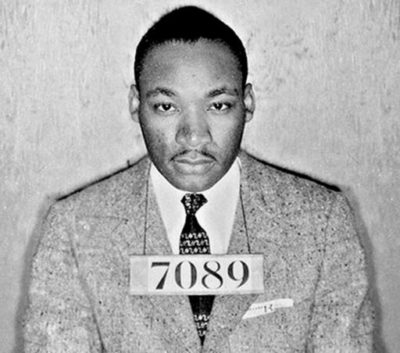
As regular readers of Epsilon Theory know, I make my home in the wilds of Connecticut today, doing my best Eddie Albert / Green Acres impersonation here on Little River Farm, but I grew up just outside of Birmingham, Alabama. My father spent his entire adult working life as an ER doc at Lloyd Noland Hospital in Fairfield, Alabama (trust me, about as far from Fairfield, Connecticut as the Earth is from Mars), starting back before emergency medicine was even a thing. My mother kept their two sons from getting into too much trouble and created a wonderful home from a (quite) modest house in an unincorporated area that’s now part of Hoover.
Lloyd Noland Hospital itself is an interesting story for a brief Epsilon Theory aside. It was the old Tennessee Coal & Iron employees hospital, dating back to 1919, acquired by US Steel when it bought TCI in the 1950s, then immediately spun off as a nonprofit foundation. The Foundation sold its assets to Tenet Healthcare in 1996, and the senior Foundation executives made a fortune. A lot of the staff, both doctors and nurses, were fired. Funny how that works. Tenet flipped the hospital to HealthSouth just three years later in a deal backed by public money. Funny how that works, too. In 2004, HealthSouth imploded in one of the largest accounting frauds in American history, and Lloyd Noland Hospital was shuttered for good. Funny how that … ah, who am I kidding … none of this is funny at all.
At least the HealthSouth CEO, Richard Scrushy, went to prison for a few years. A few.
He’s found Jesus now, of course, and if you’re looking for “a dynamic risk taking entrepreneur with a powerful track record”, he’s available to speak at your next corporate retreat. Maybe you’ll catch him on Fox Business or CNBC. Or you could buy his book. Barf.
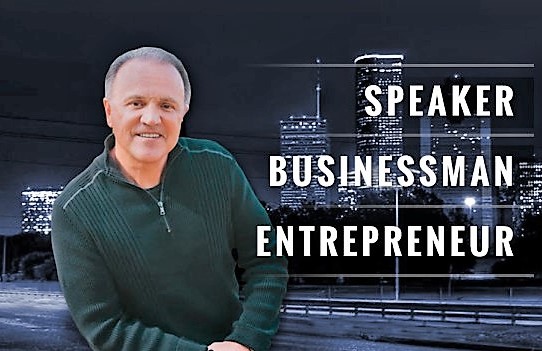
Anyway, my wife and I took three of our daughters down to Birmingham last week to visit their cousins and their Nana, and we decided to take a morning and go see the museum at the Birmingham Civil Rights Institute. It’s been open since 1992, and I’ve only heard rave reviews. But I had never been to the museum. It’s been open for 25 YEARS, and I had never been. Why not? As my father would say, Ben, you have plenty of excuses, but not a single reason.

Well, that’s not exactly true. I had a reason, just not a good one. My bad reason: I didn’t want to be lectured on civil rights. I didn’t want to be served a heaping dish of cold spinach and feel like it was my social duty to smile wanly and say “why, thank you, that was delicious. May I have some more?” What I told myself, and this is the excuse part, is that I’m a modern, educated man. I told myself that I already knew pretty much everything that needed knowing about the civil rights movement.
NARRATOR: He did not know.
Nope, not even close.
I wasn’t lectured. I wasn’t put down. I was uplifted.
Yes, it’s spinach. Yes, I walked through half of the exhibits with a lump in my throat. Yes, I was ashamed for only coming now, 25 years late. And you know what? That’s okay. I deserve that feeling of shame. I welcome that feeling of shame, because if you don’t feel shame you’re a creature of the flock, not a creature of the pack. Frankly, we need a lot more shame in the world, not as a permanent scarlet letter or as a bureaucratic tool of the Nudging State, but as a catalyst for the gut check that we all need from time to time. The gut check that requires you to come to grips with the painful past or the painful present and DEAL WITH IT as honestly as you can. The gut check that MUST be passed if you’re ever going to succeed or move forward with ANYTHING.
That’s what the Birmingham Civil Rights museum gives you. A gut check.
What makes the museum so effective in communicating a difficult story well? Just that. They present it as a story, as a Narrative. Not a Cartoon story of Superheroes, although it’s impossible to avoid some degree of hagiography when it comes to this stuff, and not a cartoon story of Social Justice™, either, although here, too, it’s impossible to eliminate completely the heavy-handed nudging of the Smileyface State. No, it’s mostly a story of … people. Of the actual lives of actual people. It’s immersive and it’s real. It creates a compelling narrative arc, but not in a way that feels scripted or forced. What do I mean? I mean that the very last exhibit of the museum is a gigantic room, filled only with photographic portraits of African Americans who endured the civil rights struggles of Birmingham in the 1960s. Not activists, necessarily, just people. No one famous. No one with a statue somewhere. A chemistry teacher. A church deacon. A housewife. Not photographs of heroic actions back in the day, but a simple portrait of how they look today. Which is … old. Weathered. But oh my god … PROUD.
And that brings me to the point of all this. Because my gut check wasn’t just an examination of the shame I felt in coming to this museum 25 years too late. There was another gut check, too. Where was my family in all of this? Because unlike the people in those photographs, I wasn’t feeling particularly proud.
I was born in 1964 at St. Vincent’s Hospital, on the edge of downtown Birmingham. I think that’s where almost everyone of my cohort and my race was born in Birmingham in those days. And unlike Lloyd Noland Hospital, St. Vincent’s is still around. Looks like it’s going strong, in fact. I understand that lots of babies, white and black, are born there every day.
Eight months before I was born, not two miles distant from St. Vincent’s Hospital, these four girls were killed in the dynamite bombing of the 16th Street Baptist Church, right across the street from where the museum stands today. It took 14 years to bring one of the killers to justice, 38 years to convict two more.
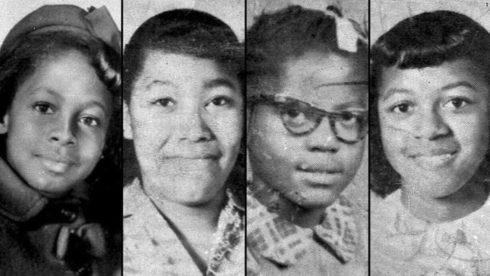
The girls’ names are (left to right) Carol Denise McNair, Carole Robertson, Addie Mae Collins, and Cynthia Wesley. I’d like for us to remember these names and not the killers’ names.
Twelve months before I was born, even closer to St. Vincent’s Hospital, Bull Connor sicced dogs on civil rights marchers and ordered the Birmingham Fire Department to attack with high-pressure hoses.
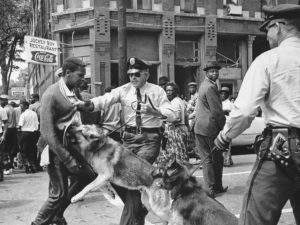

You’ve probably seen these photographs before. They’re pretty famous. Or infamous, I guess. What you might not know, however, is that most of the people in these photographs are children.
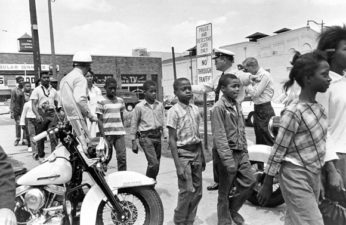

Yes, black children were intentionally attacked and detained by Bull Connor’s Police and Fire Departments, specifically because they wanted “to send a message”, something that seems particularly poignant given the “deterrence” rationale given by today’s White House in defense of its immigration policy, where brown children have been intentionally separated from their parents and detained indefinitely.
What’s also true, of course, is that there was nothing accidental about the Birmingham Childrens Crusade of 1963. Children didn’t march in some organic display of civil rights awareness.
Children were intentionally deployed by march organizers – “used”, if you will – in order to galvanize national public opinion against segregationist policies and political leaders.
That, too, seems particularly relevant given what’s happening with our immigration policy today and the Fiat News constructed both in favor and in opposition to those policies.


On that note … this most famous picture of the Bull Connor era in Birmingham? It’s not at all what you think it is. The young man in the photo had nothing to do with the protest. He was just trying to get home. And the policeman in the photo was trying to restrain the dog and protect the young man, not sic the dog on him. But the photo was so evocative, so perfect for the narrative that civil rights organizers and journalists wanted to disseminate, that it didn’t matter.
Malcolm Gladwell devoted a wonderful podcast to this picture and its (mis)use, available here.
But my question remains. Where was my family in all of this?
How is it possible that all of this was happening just down the street from where I was born, just a few miles from where I would live my entire pre-adult life, and I NEVER got a glimpse or heard a word about ANY of this? How is it possible that I would grow up without these events touching my life in any way, shape, or form? Because they didn’t. At all. More directly, why didn’t my father do something … no, scratch that … why didn’t my father do ANYTHING to support the civil rights movement happening in his backyard? Because he didn’t. At all.
To be clear, my father wasn’t a Bull Connor or George Wallace supporter. He thought they were thugs. He definitely wasn’t a segregationist or an avowed racist, and – quite the rarity – he wasn’t an unavowed racist, either, the sort of man who mutters the n-word under his breath and laughs uproariously at the “jokes”. I mean, I’m not going to say something stupid like “he didn’t have a racist bone in his body”, because I don’t think you could say that about any white person born in America in 1934, like my father. Hell, you couldn’t say that about anyone born in 1964, like me. But I’ll say this. For his day and his place, my father was as colorblind and as woke in his personal and professional life as anyone I’ve ever known. I’ve got a hundred memories of watching my father act with grace and humanity and camaraderie in interracial social settings, and not one – not ONE – of hostility or a mean-spirit. But in his political life – in his life as a citizen – he was AWOL from the defining struggle of his day. Why?
I think I found the answer to that question at the Birmingham Civil Rights museum, and I’ll use the Montgomery bus boycott of 1955 – 1956 to illustrate.
We’re all familiar with Rosa Parks, the seamstress who refused to give up her seat on a Montgomery bus to a white man, and was duly arrested, tried, and fined for breaking this prototypical Jim Crow law. What we’re less familiar with, however, are the politics and the NARRATIVE of the civil rights protest that followed in the wake of Parks’ arrest.
First, it wasn’t just Rosa Parks who refused to give up her seat, and several of those arrested were children.
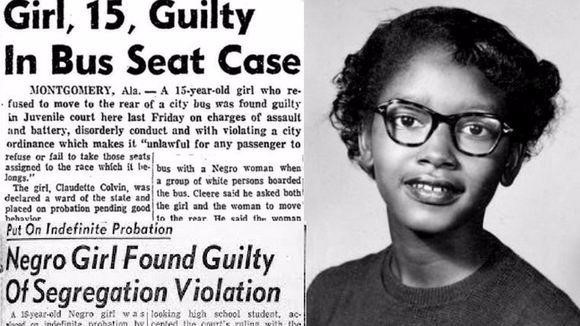
Look at the charges filed against this 15-year-old girl – assault and battery for refusing to give up a bus seat. Look at the sentence here – the girl is declared a ward of the state, legally and permanently separated from her parents. This happened nine months before Rosa Parks was arrested.
Like the Childrens Crusade of 1963, it was no accident that a 15-year-old was on the front lines of a civil rights battle. The girl in this case – Claudette Colvin – was a member of the NAACP Youth Council, and her mentor – Rosa Parks – was the secretary of the NAACP Montgomery Chapter. Like the Birmingham children eight years later, Colvin was intentionally placed in harm’s way with the explicit goal of becoming a cause celebre that would be sympathetic to a national audience.
And it worked. National media coverage of the Montgomery bus boycott was highly critical of the arrests, particularly Colvin’s. In fact, the Colvin case – much more so than Rosa Parks’ own case – was the backbone of the Supreme Court decision in Browder v. Gayle, which struck down the Montogomery bus segregation laws as unconstitutional.
But Alabama media coverage – the media coverage that my father would have seen – focused entirely on the agency of the NAACP in breaking the law. There was zero assessment or discussion of the law itself. There was enormous assessment of the de facto illegality of the acts and the intentional use of children to perform illegal acts. In fact, E.D. Nixon, the head of the NAACP in Alabama during this span, decided not to proceed with a boycott of the Montgomery bus system after Colvin’s arrest precisely because – as effective as the Colvin Narrative might be on the national stage – he thought the child-used-by-NAACP Narrative would undermine the boycott’s effectiveness on the ground in the Montgomery area. Instead, he wanted an adult to be the face of the event, and that’s why Rosa Parks, arrested nine months later, is on a postage stamp but Claudette Colvin is not.
This War of Narratives, one acting nationally and one acting locally, escalated dramatically as the Rosa Parks arrest catalyzed a full-scale boycott of the Montgomery bus system in December 1955. Just as he had chosen Rosa Parks as the public face of the arrest, Nixon chose Martin Luther King, Jr., then a 26-year-old minister new to the Montgomery area, as the public face of this largescale protest action, MLK’s first. As with the choice of Parks, Nixon’s choice of MLK was brilliant from a Narrative construction and delivery perspective. E.D. Nixon played one hell of a metagame!
The white Narrative response was pretty effective, too, though. Rather than fight the boycott on the “merits” of segregation and Jim Crow laws, the status quo Narrative effort focused almost entirely on the illegality of the boycott. Yes, I know this sounds bizarre to the modern ear, but calling for a boycott of a commercial service used to be illegal. I’m not making this up.
Let me say this again, with emphasis: only a few decades ago, you would be arrested if you said out loud that people should stop going to Starbucks or Walmart or Amazon or SeaWorld or Chick-fil-A or Exxon or Red Hen or whatever.
This wasn’t just an Alabama thing and it wasn’t just a segregationist South thing. It was an anti-Labor thing across the country. It was a status quo political thing.

The Montgomery bus boycott was defined as illegal, which allowed the construction of a VERY effective Narrative that the organizers were, by definition, criminals.
That MLK mug shot at the start of this note … that’s not from his Birmingham arrest, where he wrote his masterpiece “Letter From a Birmingham Jail”, but from his Montgomery arrest, where a grand jury indicted him and close to 100 others on felony charges of “conspiracy” against a business enterprise. MLK was sentenced to a $500 fine or a YEAR in the state penitentiary. No joke. More than a year, actually. He spent two weeks in jail before the fine was paid. For his words. For the criminal harm done by his “hate speech”, as it was defined then.
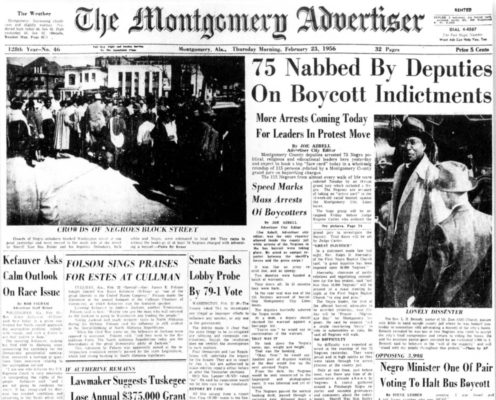
THAT’S the Narrative that my father heard. THAT’S the Narrative that moderate whites all over the South heard. It didn’t turn my father into a segregationist or a racist. But that was never the intent. The intent was to take my father off the political board. By constructing a dominant and immersive Narrative where opposing the status quo was defined as criminal, status quo institutions made it impossible for my father to actively support the civil rights movement. Why? Because to act in that way would mean self-identifying as a criminal, and that’s something my father would never do. It’s not that my father was oh-so concerned about the State seeing him as a criminal, although yeah, there’s that. My father’s pack was his family, and he wasn’t about to do anything that might draw the gaze of the State, which he distrusted immensely, onto his family. The bigger issue, though, was that my father could not abide seeing HIMSELF as a criminal, and that was the meaning of civil rights activism in the Narrative ocean in which 1960s Alabama white people swam: civil rights activism = criminality.
This is the awesome power of effective Narratives and the Common Knowledge Game. They don’t control us directly, like high-pressure fire hoses and billy clubs. No, they’re much more effective than that. Narratives and the Common Knowledge Game drive us to control OURSELVES.
The goal of Narrative creation by status quo Missionaries like politicians and oligarchs is rarely to change your mind. It’s rarely to try and switch you from one side to the other side. It’s rarely to get you to vote FOR them or to buy FROM them. Because you already do.
The goal of most Narratives is to take you off the board.
The goal of most Narratives is to convince you to sit down and shut up.
In our investment lives, we are told to sit down and shut up when it comes to Industrially Necessary eggs, investment products like ETFs and passive index funds. We are told by trillion dollar asset managers, who just happen to dominate the market in ETFs and passive index funds, that our fiduciary fitness is defined by our opposition to “high fees”. We are told that we are acting against our client’s best interests – i.e. we must self-identify as bad guys if not outright criminals – if we don’t focus on investment fees as our be-all-and-end-all consideration. None of this will turn independent-thinking financial advisors into outright Vanguard-indexing pod people. But it will absolutely make independent-thinking financial advisors doubt themselves and their own virtue if they start to question the party line. You’re not one of those bad guys trying to screw over your clients by putting them into actively managed funds, are you? No, of course you’re not.
In our political lives, we are told to sit down and shut up when it comes to law-breaking Others, like child-using MS-13 gangbangers or Muslim-country-originating ISIS terrorists or … on the other side … statue-protecting Charlottesville Nazis or Putin-loving White House traitors. We are told by trillion dollar political/media machines that our patriotic fitness is defined by our opposition to these cartoon foes. None of this will convince independent-thinking Republicans to vote Democrat or independent-thinking Democrats to vote Republican. But it will absolutely make both independent-thinking Republicans and independent-thinking Democrats doubt themselves and their own virtue if they start to question the (literally) party line. You’re not one of those bad guys trying to screw over America by supporting the criminals/terrorists/Nazis/traitors, are you? No, of course you’re not.
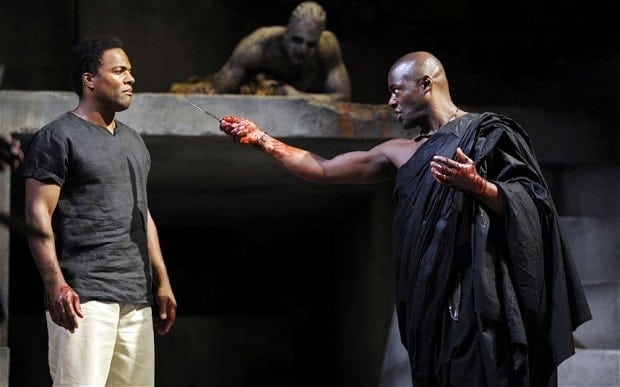
Last summer I wrote a note – Always Go To the Funeral – to introduce the social and game theory dynamics in play with all of this. At the time I didn’t see how our Narrative shock collars could possibly get any stronger.
And yet here we are. The shock collars are zapping us harder and harder. Our respective yards encompassed by our respective invisible fences are getting smaller and smaller.
Red Hen … ZAP!
Child prisons … ZAP!
Supreme Court … ZAP!
MS-13 … ZAP!
Russia … ZAP!
I’m not saying that you should fight the Man, whatever that means to you.
I’m saying that the Man is very, very active in these Narrative efforts to take you off the board, to convince you to sit down and shut up as an investor or as a voter. I’m saying that once you start looking for these efforts, you will see them everywhere.
I’m saying that the Man is very, very skilled at defining your choices in ways that don’t seem at all like they’ve been defined for you. In ways that seem like common sense. In ways that seem like common decency. In ways that make you believe that YOU are the bad guy if you question the Narrative.
I’m saying that’s not true. I’m saying that you’re not a bad person for questioning the party line. I’m saying that you may still make the choice to take yourself off the board, but make it a choice. I’m saying that the sense of shame you may feel when you wrestle with these issues isn’t a sign of weakness, but a sign of strength. I’m saying that you may feel alone and besieged and full of self-doubt as you wrestle with these issues, but only because that’s the way that your social animal brain is hard-wired. Not because you are truly alone.
If I could go back in time and tell my father, gone more than 20 years now, ONE thing it would be that. You are not alone. Because I suspect he felt pretty darn lonely as he wrestled with all this. I think it would have meant the world to him to talk this through with a member of his pack, to try and figure it out together.
And that’s why I write Epsilon Theory. This is the blessing it has given me. To connect me with other free-thinking and truth-seeking human beings, from all over the world and from every walk of life, who are wrestling with this most basic question: how do we make our way in a fallen world without losing ourselves in the process?
I never had a chance to talk with my father about that. Not directly, anyway. But I can talk with you. And I’ll tell you what I wish I had been able to tell my father.
You are not alone.
We are Second Foundation Partners, the publishers of Epsilon Theory, and we are committed to real change in the practice of investing and the practice of citizenship. We are an independent voice for change, with no obligation to anyone but our readers, our clients, and our partners – our Pack!
We invite you to join us, not just because we can help you become a better investor, but because ALL of us can help ALL of us become better citizens. This is the power of the crowd watching the crowd. It builds cathedrals, it starts revolutions, and it moves markets. It’s the most powerful force in the social world, and we invite you to join us in figuring it out … and putting it to work.
We call ourselves the Epsilon Theory Pack, because The Long Now is going to get a lot worse before it gets any better, and there is strength in numbers. Watch from a distance if you like, with our email updates and digests, or with our podcasts available on iTunes and Spotify.
And when you’re ready … join us!
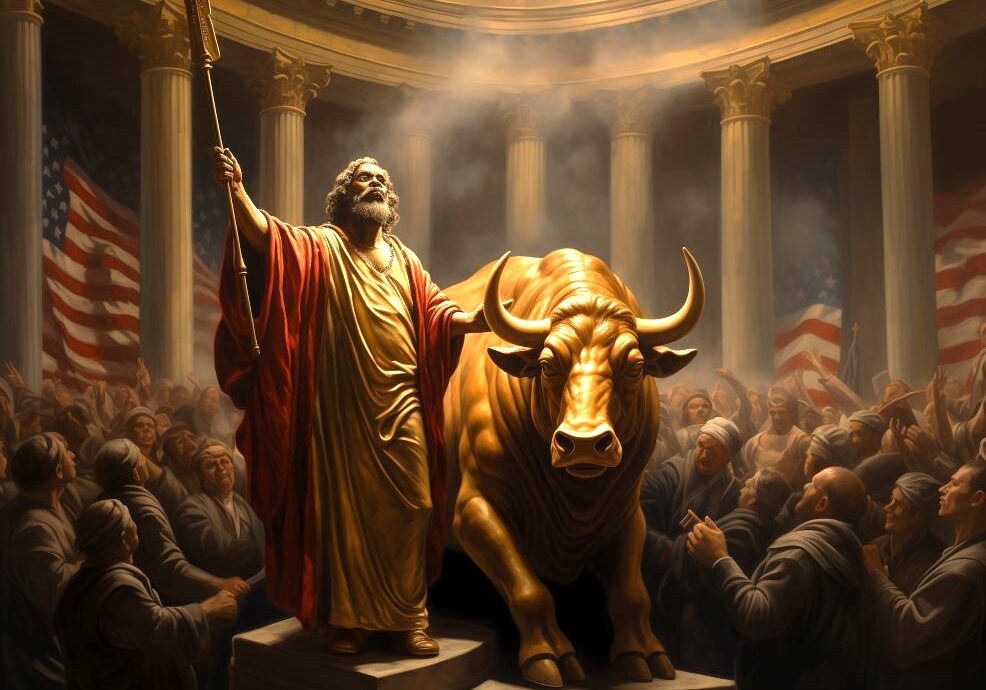
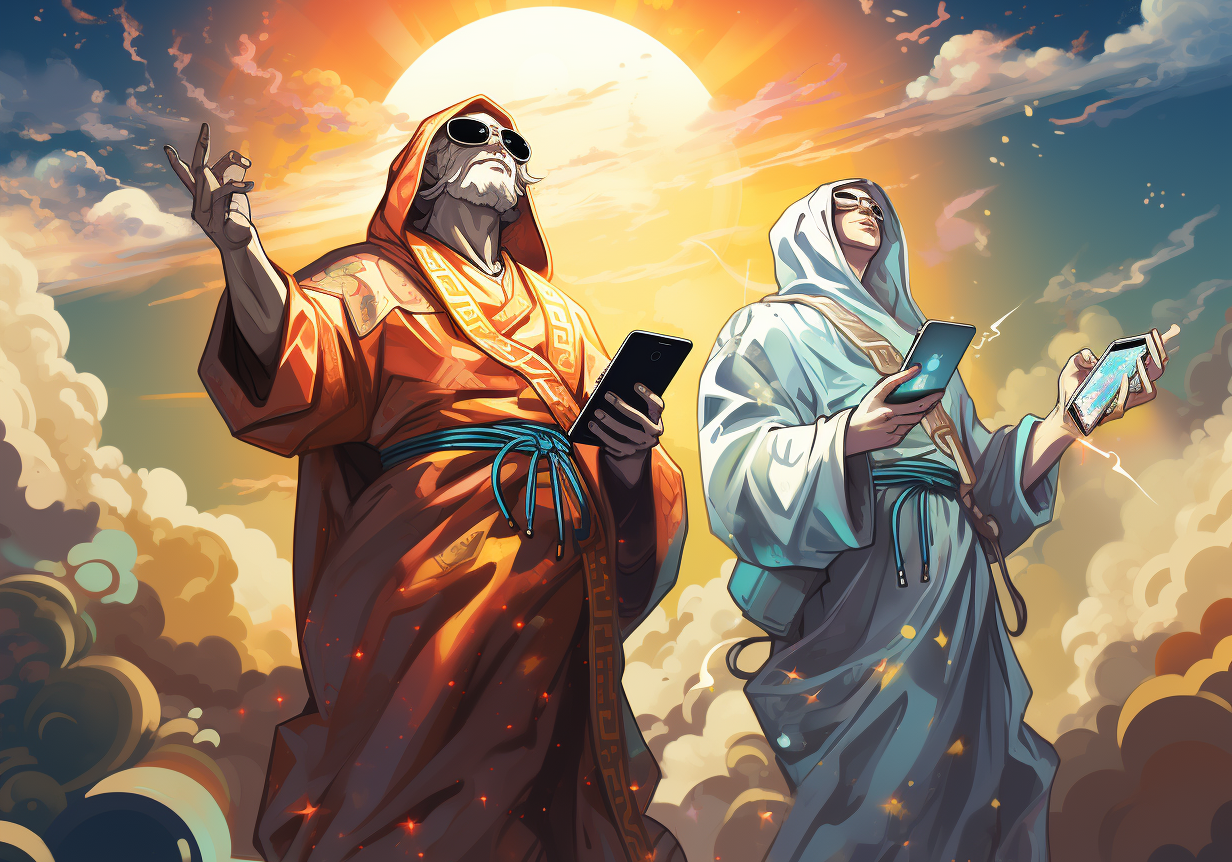





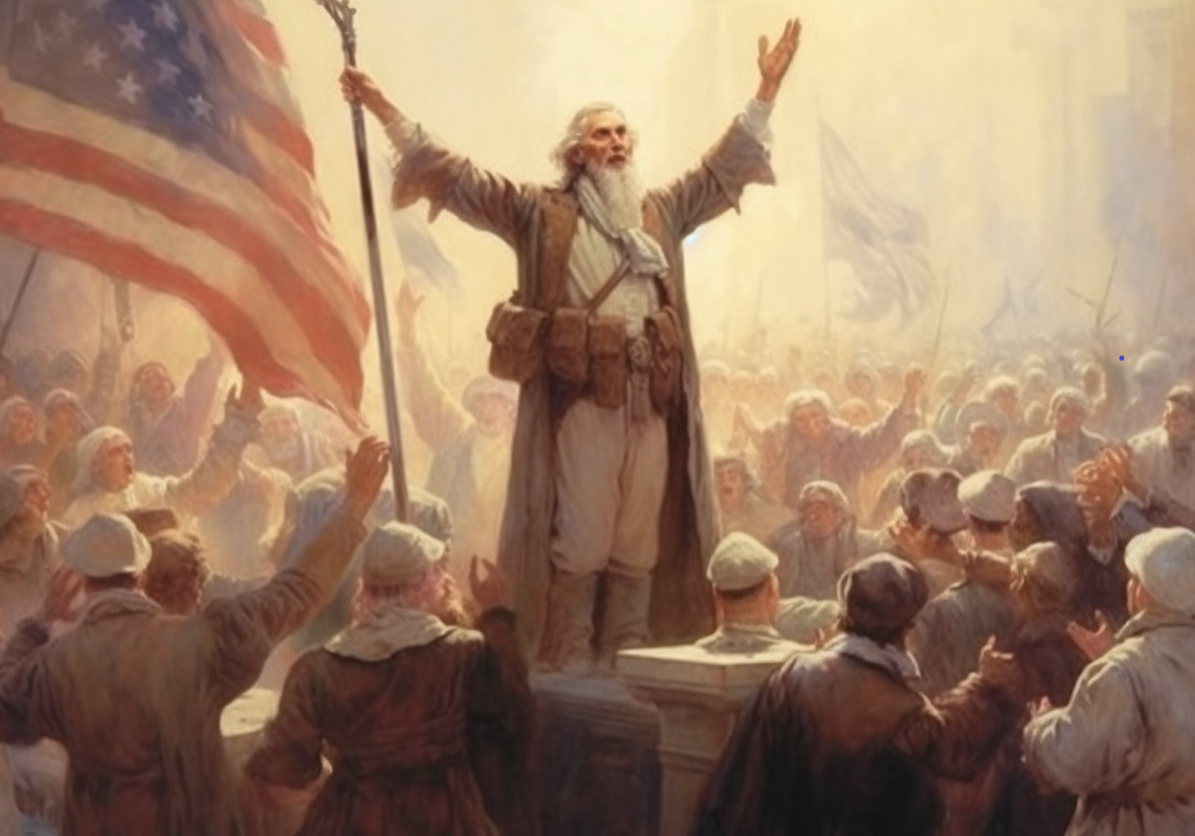
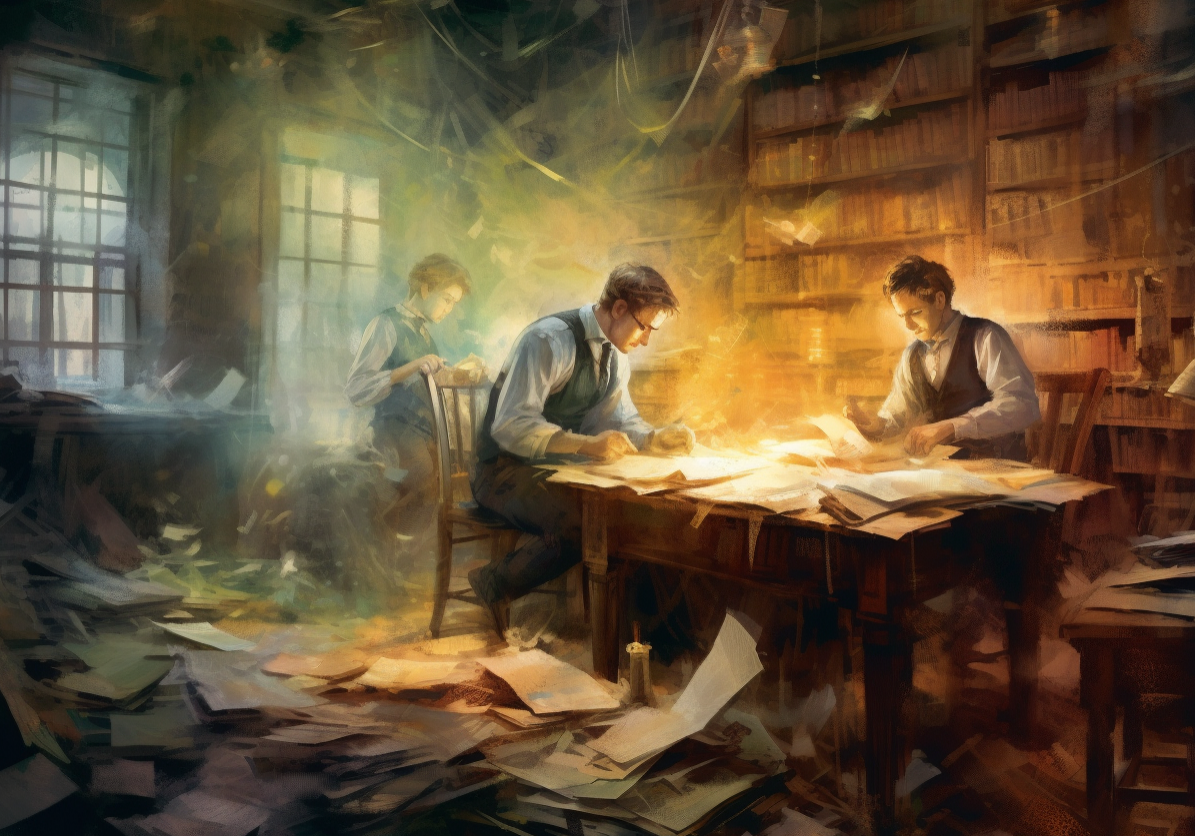

Ben,
After reading Letter from a Birmingham Museum when you published it, I re-read it every Jan 20th.
Thank you,
Jim
Ben,
I knew a black lady who grew up in Birmingham during that time and she was one of the children participating in the demonstrations. She said there was always a prayer session before they went out in public to prepare them for what they might encounter. As a little girl she volunteered to do this. She believed there was always the possibility she would be killed, but was still willing to give her life for the cause of freedom.
Rich
This is a tremendous essay Ben. I was a Brexit voting individual living in a cosmopolitan part of North London. The media narrative, the local government narrative and the mayoral narrative have all been powerfully in favour of remaining. The vast majority of my social group and neighbours were also ardent remainers. Leavers have been othered and made to feel they were beyond the pale. It is only now with the benefit of hindsight I can see just how hard ‘The Man’ worked to get me to change my mind.
The French are using power hoses on their opposition at the moment. There is a strong echo of ‘The Man’ in Europe fighting against the natural wishes of countries to determine their own future. A sort of mirror image of segregation.
Thanks for writing that Ben. There is an excellent podcast on the history behind the picture of the boy being (apparently) bitten by the German shepherd. It’s on Malcolm Gladwell’s Revisionist History (Season 2, Episode 4). I just happened to listen to it a week before your note. It gives an alternative and much more nuanced narrative - 30 minutes well spent. I totally get your feelings about going to the museum. It strikes me that Germans have been much more open about their history - one can (and should) visit Dachau for instance. It’s not hidden. Why don’t we have the equivalent of Dachau here? We need to confront the history properly.
Yes! I talk about the Gladwell “Revisionist History” episode in a Mailbag note I wrote after the original posting of this note. You can catch that here: https://www.epsilontheory.com/mailbag-letter-from-a-birmingham-museum/
As someone who grew up in Australia and lives in Iraq, I appreciate these types of ET reflective moments that put it all in perspective. Next time I am in the States, I will take my daughter to see this. I only wish there was an Australian version of this museum that puts our history in perspective with such grace and effectiveness.
Ben,
I reread it yesterday. Next Sunday I’m giving a member reflection. King’s six page, single spaced, double sided letter is very appropriate, IMO, this week.
Thank you for your July, 3, 2018 ET commentary.
Jim
Thank you, Jim. And yes, King’s letter is VERY appropriate this week.
And I updated the essay to reflect Gladwell’s podcast.
About 1955 I lived in Augusta, GA. One Saturday I got on a bus to go downtown to see a movie. There was just me (a 14 or so year old) and the driver. He had the bus parked, since he had been ahead of schedule. Three GIs from Camp/Fort Gordon got on to make the same trip downtown as me. They paid their fare and went to sit down in the back of the bus. The driver said they couldn’t sit there. They asked why not? He told them, using the term of the time. They said it didn’t matter there was only the five of us. The driver said if they didn’t get up the bus wasn’t moving. With some irritation the GIs moved up. Even as a teenager that had grown up in the south, the stupidity of the situation hit me fairly hard.